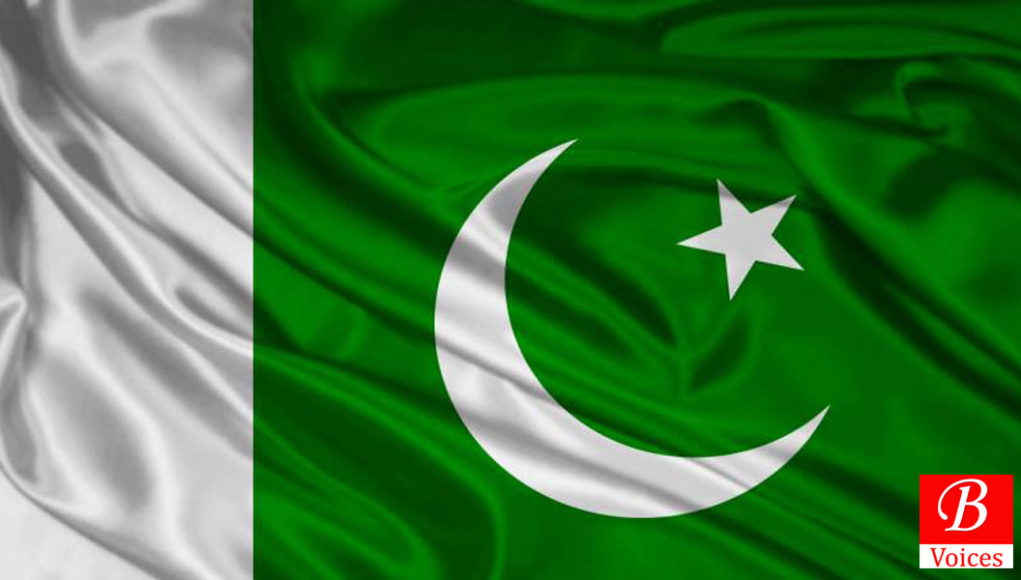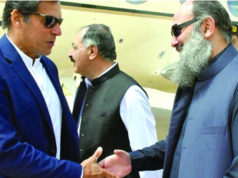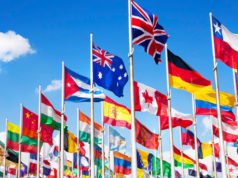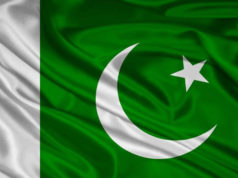Tahira Khan
Pakistan is considered to be the major key player in South-Asian political atmosphere, particularly, after the compound crisis of 1990s which is taken as a most significant event after cold war scenario. Many analysts have termed it a ‘failed state’ while other so-called scholars have left no stone unturned in proving it to be a ‘rogue state’.
The geographic proximity has led Pakistan playing a vital role in almost every beleaguered situation in so many ways, particularly, at South Asia- if and only if the perspectives of neighbours are taken into account. First, being a nuclear weapon state with official recognition of proliferation. Second, militant and jihadist policies as a part of strategic framework right after its inception in 1947- as per Hussain Haqqani analysis. Third, critical relationship with India and its ideological dilemma. Fourth, the stagnating scenario of its economy and dependence on foreign loans along with the ever increasing unemployed young population.
That’s why it is said that; “The biggest tragedy of Pakistan lies in its geography”.
Keeping in view this strategic reality, the future of Pakistan is almost impossible to predict, specifically, because of the internal and external challenges. But, this speculation has been done in the ‘Future of Pakistan’ which is a compilation of different essays being edited by Dr. Stephen P. Cohen who is a senior fellow of Brookings Institution-Washington DC based think-tank.
The book emphasis on factors and variables which are most likely to affect the future prospects of Pakistan and its political pattern involving both domestic and foreign actors. Though, the overall narrative is pessimistic in nature but it outlines one most important thing; Pakistan is not on the verge of collapse despite the fact that no major evolution will occur in the next five to seven years.
He further reiterates; “Pakistan is muddling through, but change and transformation are coming.”
The book focuses on some hurtful truth instead of uttering pleasant lies which has made it is an essential read for those who wanted to understand both the political system and politics of Pakistan with respect to emerging global realities. In addition, it explores avenues for the determined and prosperous future of change.
The future rewards those who press on. I don’t have time to feel sorry for myself. I don’t have time to complain. I’m going to press on. _Barack Obama
The introspection starts from history where Field Marshall Ayub Khan, later President, took first ever transformation consisted of market oriented economy, discipline, guided democracy which ended with the 1965 war. The later General, Yahya Khan, was also incapacitated of managing the deteriorating conditions.
The second transformation took place during the reign of charismatic leader Zulfiqar Ali Bhutto who was, unfortunately, overthrown by General Zia-ul-Haq with intense affection for Islamization of state. ZAB policies included less control of military, economy based on both Islam and Socialism, dynamic foreign and security approach and last but not the least, the creation of nuclear weapon.
General Zia age can be labelled as “the dark Islamic age” which first hanged ZAB in rigged trail and then got foreign support because of anti-Soviet militant policies.
After Zia era, the other decade, involving both Nawaz Shariff and Benezir Bhutto in alternate governments, is infamous for being the ‘lost decade’ because of almost zero economic growth with ‘imperfect democracy’.
Then, there comes another General, Pervez Musharraf, who undertook fourth transformation but a failed one, indeed. His policies are as under;
- Privatization policy
- Fiscal and administrative devolution of districts ( Local Self Government scheme)
- Establishment of NAB (National Accountability Bureau)
- Autonomous HEC (Higher Education Comission)
- First extended supported towards free media but in later years abandoned this policy
- Poverty eliminating approach
- Women protection bill and reserved seats for women parliament
- Registration of Madrassas and development of secular curriculum
His policies were good for maintaining public relations but failed bitterly when it came to execution and explicit elaboration of details with facts. This, ultimately, led to his downfall in form of lawyer’s movement, Lal Masjid incident and notorious army backup for war in Afghanistan.
Stephen was right in saying that ‘Pakistan is stuck between military dictatorship and civilian democracy’. Yes, army is responsible for saving Pakistan from any major collapse but it is also the main reason behind disruptive governmental machinery and ineffective democracy.
Generally, political parties of Pakistan are taken as incapable for both bringing reforms and integrating interest articulation. Because of this civilian default, our state is still in form of transitional democracy where one step forward leads to two-step backwards formula. Although, in this chaotic conditions PPPP (Pakistan People’s Party Parliamentarians) managed to withdraw following constitutional reforms:
- 18th amendment
- Restoration of judges
- Affirmative response of provinces for 7th NFC (National Finance Commission) award
- Continuation of Eco policy
That’s Asif Ali Zardari, PPPP chairman and former president, era is considered to be the revival of democracy which is still needing accommodation of more comprehensive reforms in form of states’ rebuilding if and only if military allows to do so.
Moreover, Pakistan is taken to be between the strategy of hope and despair and if it wanted to get rid of historical burden and the notion of victimhood, following two options must be discussed:
- Economic trade with South-Asian countries
- Reformed governance and elimination of militancy
In order to analyze the future dynamics of state, ‘Future of Pakistan’ book could be divided into four portions which gives insightful approach towards each and every significant factor responsible for shaping Pakistan.
The very first portion is all about demography, urbanization, economy and education. This book is, actually, the first ever writ-up which has attempted to discuss the growing young population with high rates of employment. Sixty percent population consists of young age and up till 2030, youth will cross 130 million. In order to manage this youth bulge economic growth must be at rate of over six percent but the average counted growth is 4.9 % only which is a sign of alarm for us. One important factor in economic crippling is ever increasing defense budget and less exports as compared to imports.
In addition, educational gap is started to be filled by madrassas and, thus, modern educated scholars usually get this message across the social milieu:
“Your work is not important.”
The other factor realizes the identity crisis of Pakistan which has been the result of absence of Consociational democracy but the few anti-state elements has tried to monopolize the situation with regard to religion. I have recorded my response on the topic in my previous article titled as “Pakistani Nationalism: A chance out of tragedy.”
This sectarian divide and rise of Islamic radicals has been influenced by Iranian Revolution, military involvement and 9/11 trauma. This has nothing to do with state identity but manipulation of bureaucratic agencies has created challenges for state-religion status.
Third portion asks for civil-military complex relationship along with the accommodation of common objective within state apparatus. Military has to deal with few factors like that of India and internal militancy.
As political parties are weak in structure and programmatic way, the political system will be found in between unstable and weak democracy with alarming possibility of outright dictatorship. This could be witnessed in poor performance of governance with falling indicators. At Failed State Index, it is acquiring the ‘critical status’.
As far as media and the Judiciary is concerned, both are devoid of playing any constructive role.
The last portion deals with foreign policies and globalization process. Our relation with Afghanistan, India and United States is needed to be revived at urgent basis apart from China which is the sole strategic partner at every forum.
Globalization is not the major problem but our failed measures in form of weak governance, low literacy rate and absence of land reforms has made the approach critical for our country.
No doubt the challenges are enormous which are injecting unpredictability and uncertainty in the South Asian politics with reference to Pakistan. But, we still can entertain better future proposals if take care of few warning signs like that of critical situation with India, governance issues, foreign loans, Islamists appeasement policy, economic stagnation and bad record of state/nation building.
The future belongs to those who prepare for it today. – Malcolm X
Writer is a team member of Balochistan Voices and a Student of BS (Hons) Political Science in University of the Punjab, Lahore. She hails from Loralai District. Click here to read previous articles written by the author.
Disclaimer: Views expressed in this article are those of the author and Balochistan Voices not necessarily agrees with them.
Share your comments!








